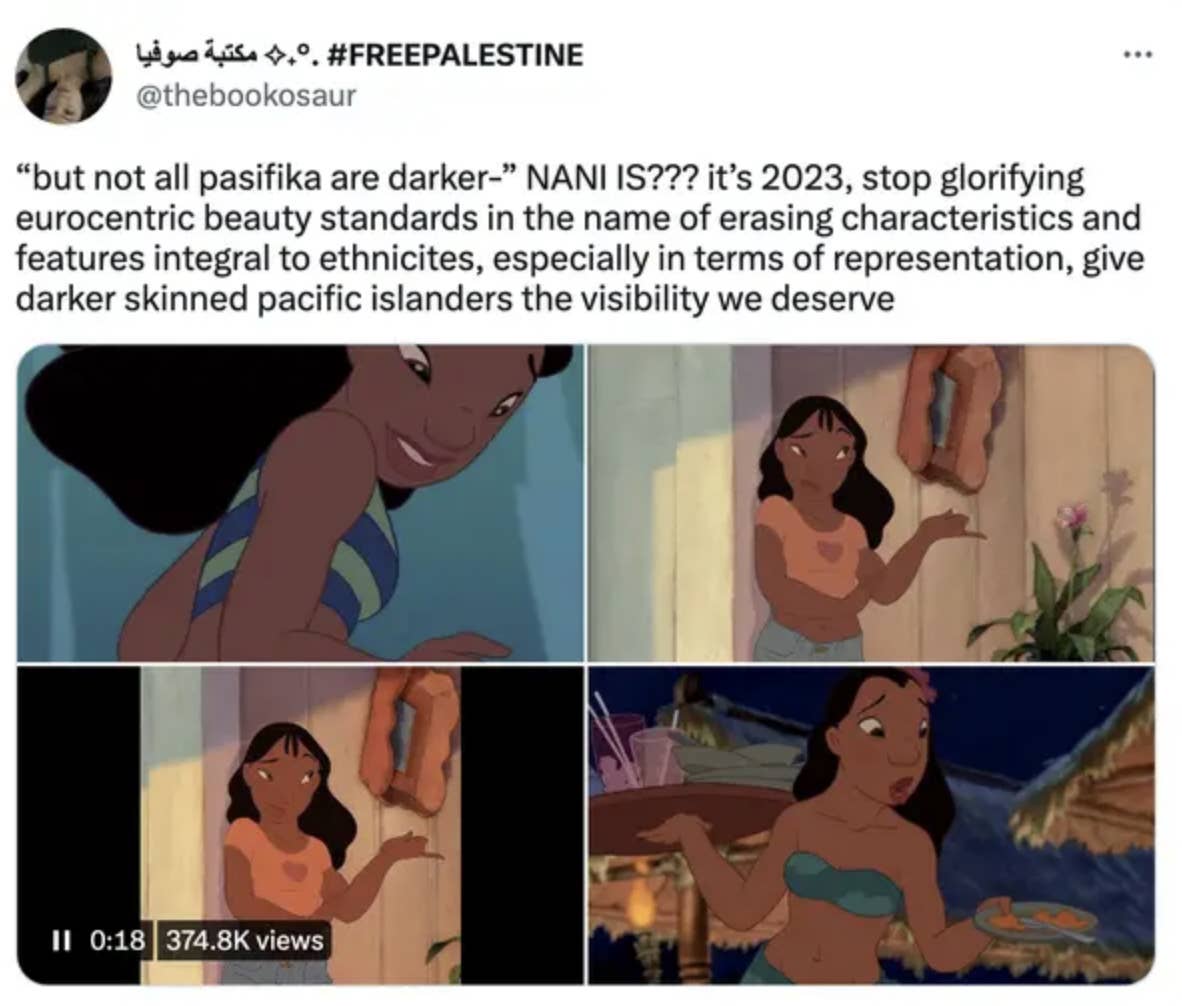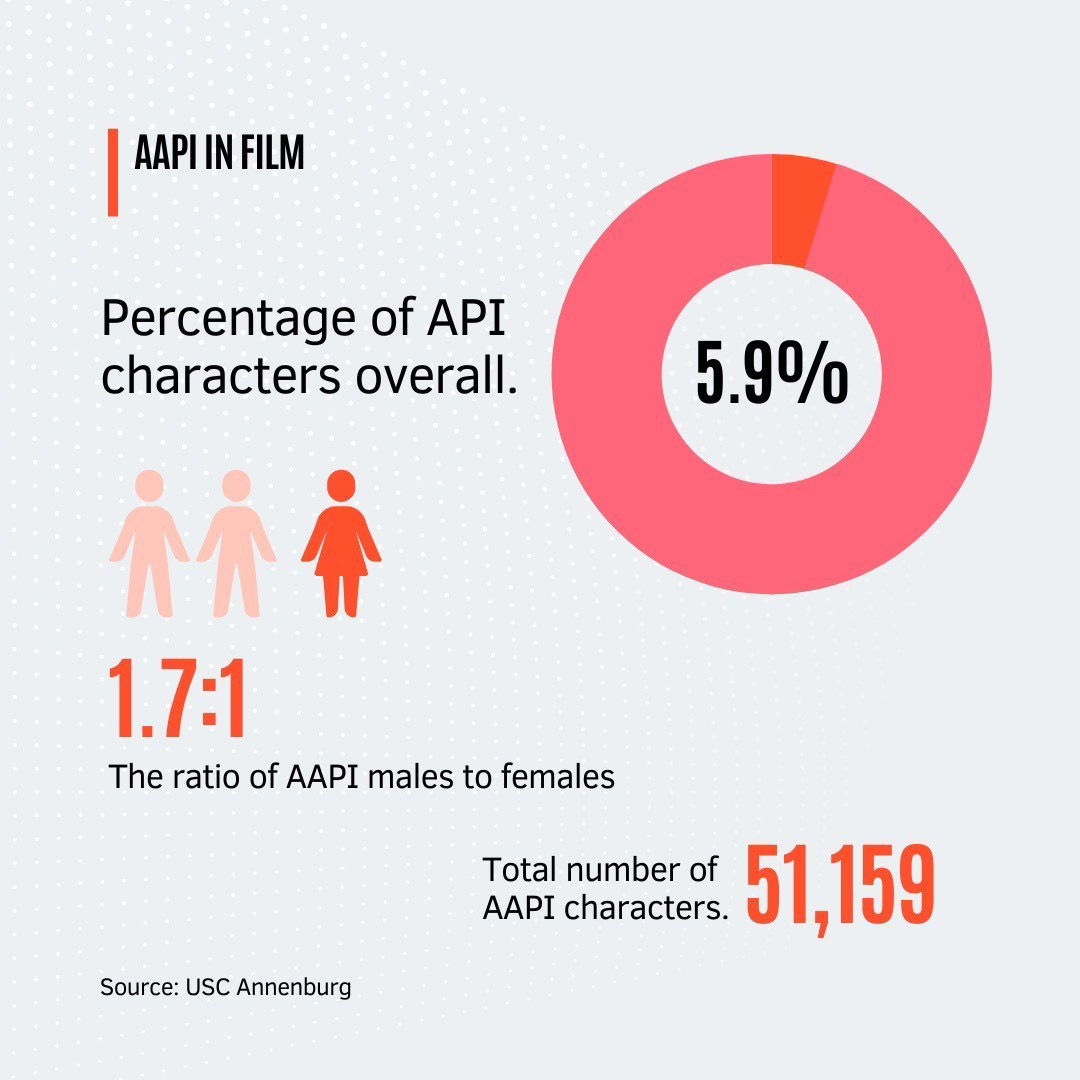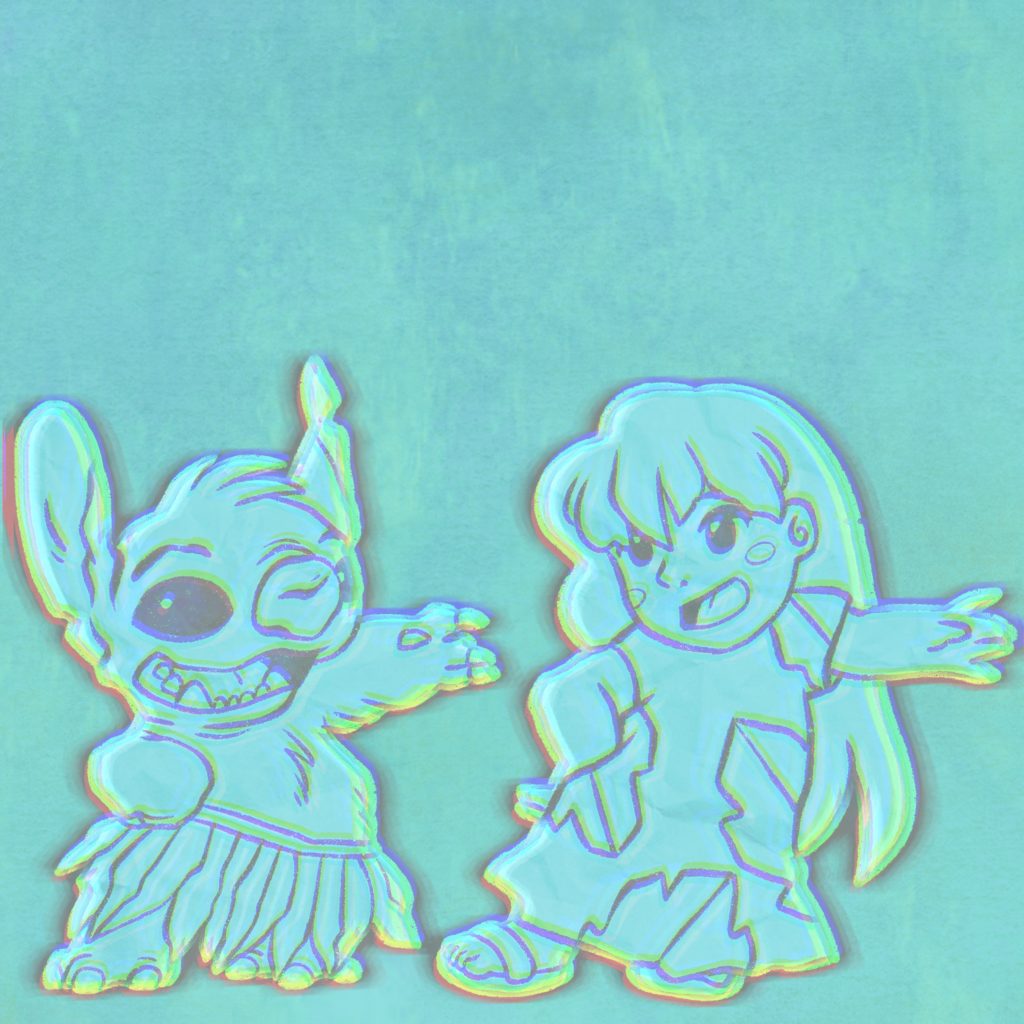Illustration by staff illustrator Sakura Siegel.
“Lilo & Stitch” remains to be one of the most beloved Disney films for a reason.
The animated film first takes viewers to an intergalactic setting where a destructive experiment escapes space authorities and launches itself onto an unknown world – Earth. There, we are introduced to Native Hawaiians Nani and Lilo Pelekai who have their own set of problems, and when “Stitch” enters their lives, it gets even more chaotic. But amidst the commotion, the film is heavily grounded behind a much deeper meaning – family and a sense of belonging.
And this meaning is rooted in “Ohana,” which is a Hawaiian term for “family,” but refers to more than just blood relatives. Ohana recognizes that everyone is related, and this message becomes evident when the drastically different worlds of Lilo and Stitch collide. So when fans were introduced to Lilo and Nani, two deeply tanned Native Hawaiians with round noses, thin almond eyes and jet black hair, it was a big deal.
Earlier this year, it was announced that a live-action adaptation of “Lilo & Stitch” was in the works for 2024, but when casting directors began making their choices, it wasn’t what many fans of the iconic series wanted. Nani will be played by Sydney Elizabeth Agudong, who is multiracial with Hawaiian ancestry; Lilo has been casted as newcomer and Hawaiian-born Maia Kealoha; and David Kawena, who was originally going to be Kahiau Machado, will now be played by Hawaiian-born Kaipo Dudoit.
While fans seem to be satisfied with the choices for Lilo and David – following the recast – many are still trying to urge casting directors to recast Nani, arguing that having a lightskin portrayal of Lilo’s guardian – or any of the human characters – takes away from the story, which is embedded so deeply in indigenous Hawaiian culture.
Hollywood’s Representation Issue
Before the movie’s release in 2002, there was no representation for indigenous Hawaiians, Polynesians nor Pacific Islanders in Disney’s animated films. Then came writer-directors Chris Sanders and Dean DeBlois, who are both Caucasian/White, but have been repeatedly praised for their extensive efforts in portraying Hawaiian culture in an authentic way.
“Chris and Dean, the directors, went to Hawaii and they did a lot of research on what the houses look like, what plants look like, what the island and the mountains look like. And it really shows, it’s not like just some generic tropical island, you can see that they did their homework and bringing me on, being born and raised there and really listening to the people that brought their ideas and the Kamehameha Schools Children’s Chorus for ‘Hawaiian Rollercoaster Ride,’ all of this stuff is the real fingerprints of Hawaii all over the film,” Tia Carrere, who voiced Nani in “Lilo & Stitch” and “Lilo & Stitch: The Series,” told Cinema Blend in 2022.
“And I think that really was key is that they know they didn’t grow up there and they invited people that are from there and wanted to hear and included [us]. It was true inclusion, because they included our creative ideas in everything.”
Though the animated movie and series did well in portraying authentic Hawaiians, after Agudong and Machado were casted for the live-action, it sparked outrage and a hefty debate about colorism in the entertainment industry, which has happened more times than not, especially in Disney adaptations like 2019’s live-action “Aladdin.” Agudong has been reported to have Native Hawaiian ancestry, but many have argued that the role should’ve been given to a Native Hawaiian with a darker complexion.

What may have hurt fans even more, was some social media users’ claims that Agudong’s mother is White and is a realtor in Hawaii. Over the last few years, Hawaii has experienced a lack of affordable housing, a constant increase in housing costs and little to no wage raises, forcing a growing number of people, especially Native Hawaiians, into homelessness.
The fact that she has a white parent who has sold land here is an even bigger slap in the face. Many may not understand our frustration with owning land in Hawai‘i but basically she has sold native lands to people who can afford it, majority rich white people.
— Little Merbeing (@LittleMerbeing) April 15, 2023
Machado was announced to join the live-action film not too long after Agudong. Many people were also against the choice because, while he’s reportedly of Hawaiian ancestry, he still resembles more Eurocentric features and is light skin. He was later replaced with Dudoit, but not because of the backlash, instead because he reportedly used racial slurs – the N-word – in old social media posts.
Some social media users have argued that if Hollywood isn’t being held accountable for white-passing castings or whitewashing POC stories, then it will prolong the ongoing issue.
Tourists And Non-POC’s Role In ‘Lilo & Stitch’
The film portrays the struggles of 19-year-old Nani who searches for a job in desperation to not get separated from her six-year-old sister, Lilo, and left to the hands of the government’s Child Protection Services. But it also highlights the joys of the native people who spend their time riding waves, taking hula dance classes and more island activities.
However, tourists and non-people of color are arguably portrayed as a hidden antagonist as they typically pose some type of negative connotation to the main characters. They range from random tourists – who are drawn with non-Hawaiian features – or Mertle Edmonds, who constantly bullies Lilo.
What arguably makes “Lilo & Stitch” different from most of Disney’s animated films, is that it’s shown through the gaze of Native Hawaiians, rather than White characters, who do appear on the island throughout the film and series, typically in the form of tourists or even a resort owner, as shown in episode seven of “Lilo & Stitch: The Series.”
In episode seven, Nani and David take Lilo to a nearby resort pool to cheer her up. Eventually Nani and David get caught by – who seems to be – the resort owner, or worker, who is drawn with Eurocentric features, and says, “Pfft, locals. Next time, I call the cops.” In episode nine, when experiment 502 is on the loose, a driver, who appears to be White, yells at the experiment to move because his “timeshare clock’s a ticking!”
A TikTok of a deleted scene from the movie also went viral. In the clip, tourists ask Lilo where the beach is while implementing some type of stereotypical remark. She points everyone in different directions.
People are reposting this deleted scene from Lilo and Stitch upset that it was cut.
But have we asked why it was cut?
Because Disney was part of the tourism industry being condemned in the scene, and likely already planning their Hawaiian resort, Aulani, when it was made. pic.twitter.com/6AlmtiuYy7
— @FangirlJeanne.bsky.social (@fangirlJeanne) April 15, 2023
This tactic depicts the complicated relationship between Native Hawaiians and its non-native people.
The closest comparison to this strategy could be 1995’s “Pocahontas,” but that film is marinated in controversy as critics have accused Disney of whitewashing the real history behind the colonization of Native Americans by European settlers. Rebekah Ross, an Ojibwe tribal citizen, noted that “Pocahontas” is a “highly fictionalized version of [Pocahontas’ real] story is a way for White people to make themselves feel better about the horrible things they’ve done/continue to do to natives.”
While Mertle is not specifically categorized as Caucasian/White, it’s clear that she has more Americanized features like her paler skin and orange or ginger-type hair. The rest of her entourage resembles Native Hawaiian features, but they follow Mertle as their leader and also bully Lilo.
Despite the name-calling and intentional outcasting, Lilo continues to call Mertle and her group “friends.” In one episode, Nani tells Lilo that friends aren’t like this, but she continues to believe that they’re all she has.
The fact that Lilo and Stitch are both considered “weird” is an arguable metaphor for how people of color have been treated as outcasts in the past and, sometimes, still today.
AAPI In Hollywood
Part of the problem with finding an actor or actress that authentically fits the bill for the “Lilo & Stitch” live-action – who also has the talent that casting directors are looking for – is that there just aren’t enough Native Hawaiian actors – there’s not even enough Asian American or Pacific Islander actors, according to a 2021 report published by NBC News.
“There just aren’t enough roles for [Pacific Islanders] and Asian actors in general. And that’s why we see The Rock so many times,” Nancy Wang Yuen told NBC News. “We don’t see anyone else, because it’s coming from behind the scenes. It’s the storytellers, the people who are greenlighting the projects. The Rock succeeding could actually help bring more Pacific Islander actors.”
According to the study done by Yuen and Stacy L. Smith of the USC Annenberg Inclusion Initiative, 44 films had an Asian American or Pacific Islander, and Dwayne “The Rock” Johnson, who is of Samoan descent, was the lead in 14 of them.

But in March, the Oscars made a huge step towards recognition of the Asian American community. “Everything Everywhere All At Once,” which largely culminated of an Asian and Asian American cast, swept the prestigious awards show. “Easter Sunday,” a 2022 movie that focused on a Filipino family, led by Filipino-American comedian Jo Koy, was a first for Filipinos, who can be categorized as either Asian or Pacific Islander. “Crazy Rich Asians,” released in 2018, was also a big step for the Asian and Asian American community, but there has yet to be a blockbuster film that showcases AAPI of darker skin tones.
There is, however, a growing influx of Asian and Asian American actors, which could possibly open the door for more AAPIs who are more dark skinned.
There hasn’t been any updates on recasting Nani. As of now, it looks like they’re sticking with their current cast. Disney has yet to comment on the ongoing backlash.












